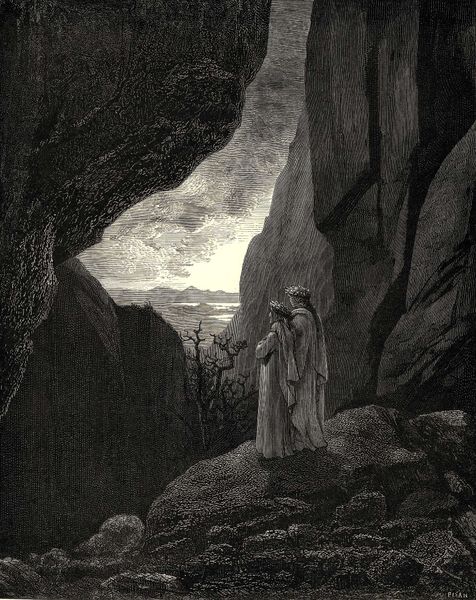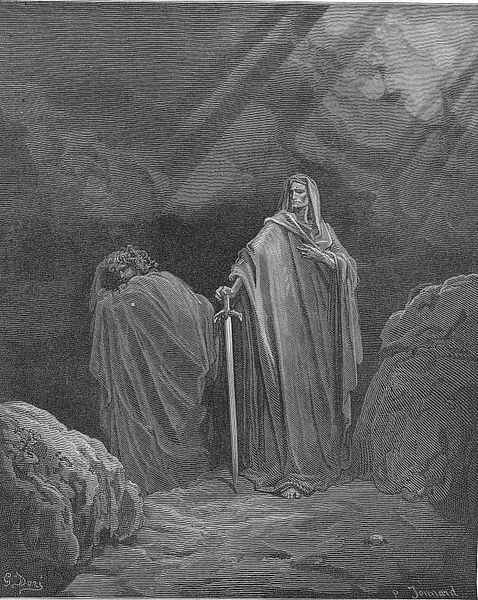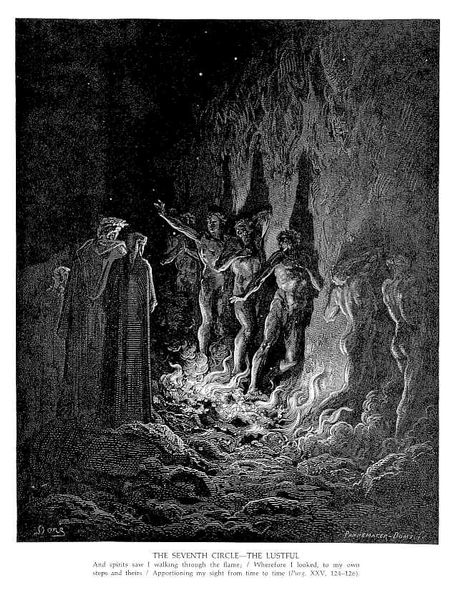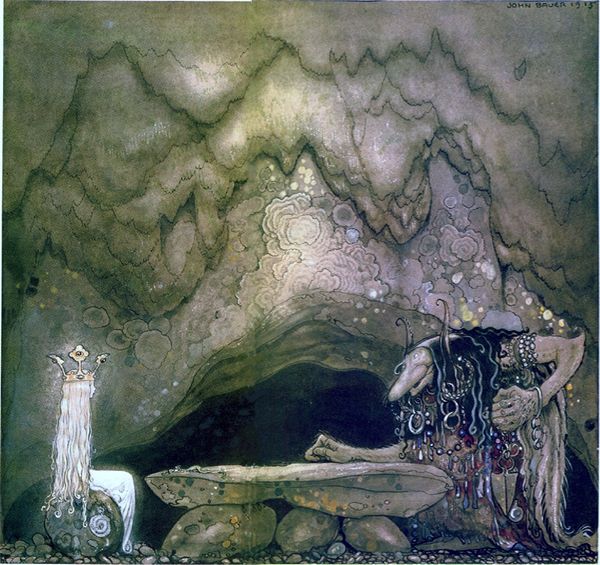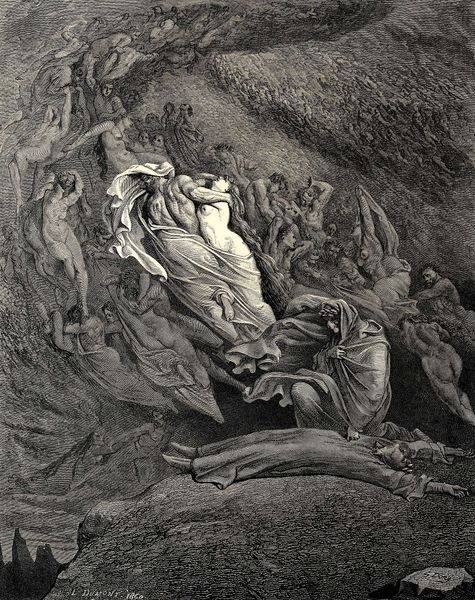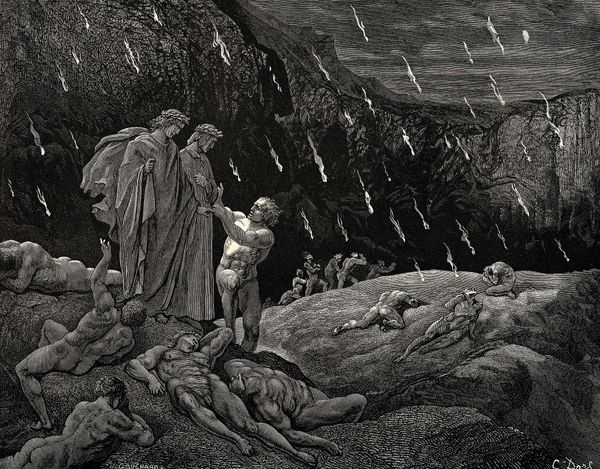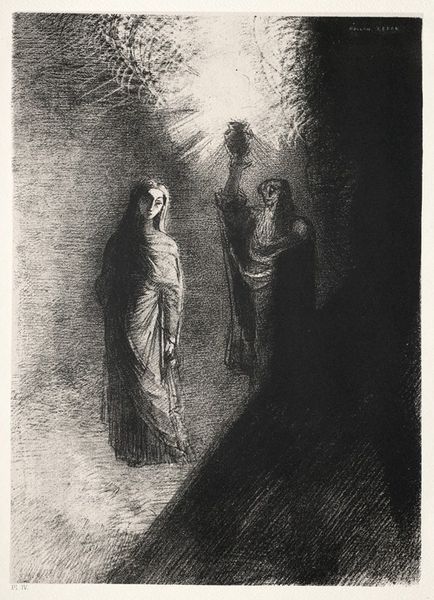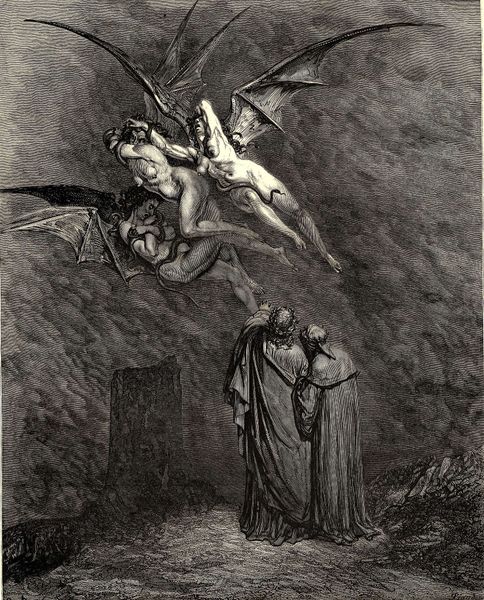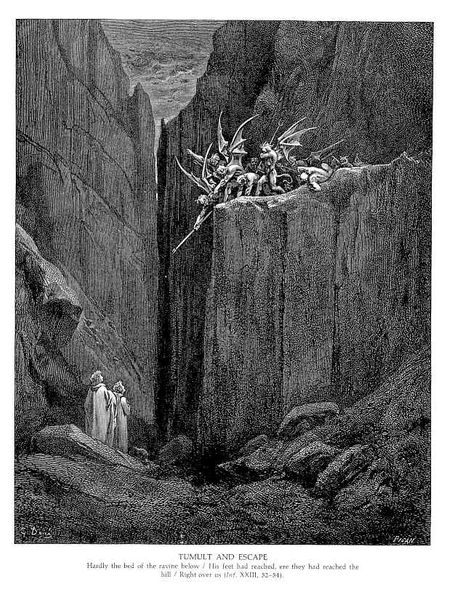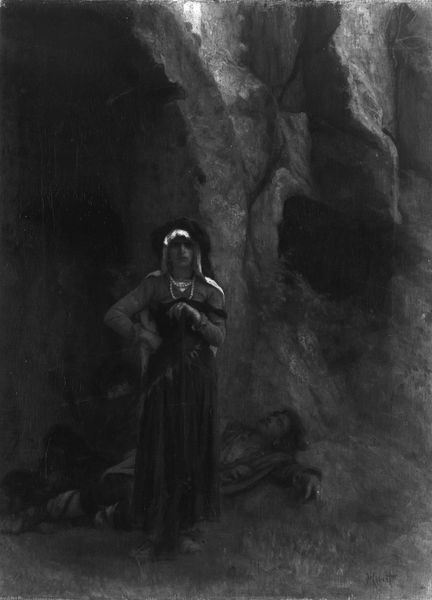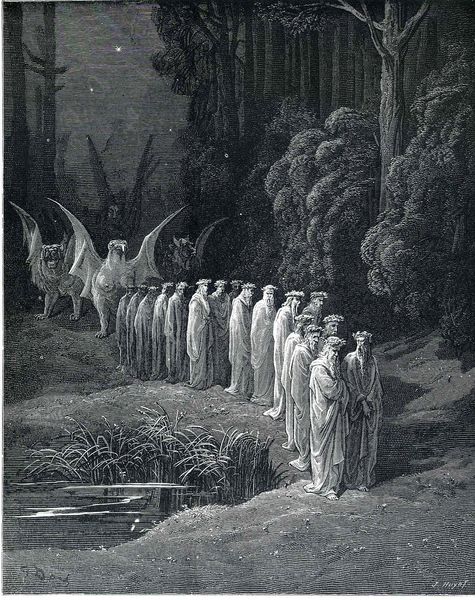
drawing, print, engraving
#
drawing
#
narrative-art
# print
#
sculpture
#
charcoal drawing
#
romanticism
#
haunting
#
history-painting
#
engraving
#
ruin
#
statue
#
monochrome
Copyright: Public domain
Gustave Doré made this wood engraving of The Inferno, Canto 10 in the 19th century. Doré's dramatic illustrations, commissioned for a new edition of Dante's "Inferno," captured the imagination of a rapidly industrializing Europe grappling with social and spiritual anxieties. Here, we see Dante and Virgil observing the tormented souls of heretics, trapped in flaming tombs. This image creates meaning through visual codes; the darkness and flames symbolize the eternal suffering awaiting those who defied religious dogma. Nineteenth-century France, where this was made, was a society still deeply influenced by religious institutions, even as it underwent secularization. Doré's illustrations, widely circulated through mass media, brought Dante's medieval vision to a broader audience, but the social conditions and the cultural context of the 19th-century shaped the image. To truly understand this piece, historians might consult contemporary religious tracts, social commentaries, and publishing records to understand the complex interplay of faith, doubt, and social change that influenced Doré's interpretation of Dante.
Comments
No comments
Be the first to comment and join the conversation on the ultimate creative platform.
